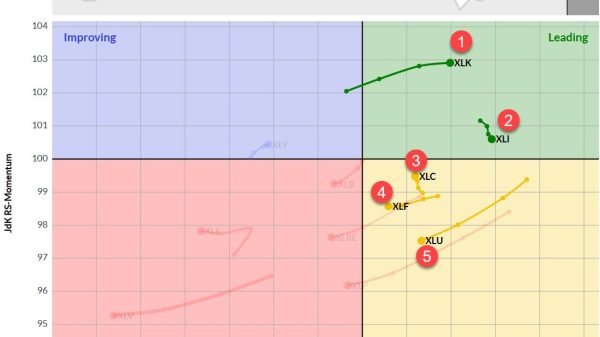Blockchain Forensics – Everything You Should Know
Blockchain technology has revolutionized various industries, offering unprecedented transparency, security, and immutability of data. However, like any powerful tool, it can be misused for illicit activities such as money laundering, fraud, and cybercrime. This has led to the emergence of blockchain forensics, a field dedicated to tracking and analyzing blockchain transactions to uncover illicit activities.
In this article, we will explore how blockchain forensics works and delve into various techniques for analyzing blockchain data.
What is blockchain forensics?
Blockchain forensics is the process of investigating and analyzing blockchain transactions to trace the flow of funds and uncover suspicious or illegal activities. It involves a combination of technical expertise, data analysis, and legal knowledge. The primary objectives of blockchain forensics are:
Transaction analysis: Identifying and analyzing individual transactions on the blockchain to determine their source, destination, and purpose.
Address clustering: Grouping multiple addresses together to infer their ownership by the same entity, potentially revealing the identity of users.
Pattern recognition: Detecting patterns of behavior that may indicate fraudulent or criminal activities.
Risk assessment: Evaluating the risk associated with specific blockchain transactions or entities.
Compliance: Ensuring compliance with regulatory requirements, such as Anti-Money Laundering (AML) and Know Your Customer (KYC) regulations.
How to analyze data?
Transaction analysis:
Blockchain Explorers: Blockchain explorers are web-based tools that allow users to search and view transaction data on the blockchain. These tools are helpful for quickly analyzing individual transactions, checking wallet balances, and exploring transaction history.
Transaction graph analysis: This technique involves creating a visual representation of transactions using graphs. Nodes represent addresses, and edges represent transactions. By studying the graph, analysts can trace the flow of funds and identify suspicious patterns, such as mixing services or tumblers.
Address clustering:
Heuristic analysis: Analysts use heuristics to group addresses that may belong to the same entity. Heuristics can be based on common input ownership, change addresses, or patterns of behavior.
Chain analysis: Chain analysis tools attempt to trace the ownership of addresses by analyzing the transactions associated with them. By following the transaction history, they can cluster addresses belonging to the same user or entity.
Pattern recognition:
Anomaly detection: Anomaly detection techniques aim to identify unusual or suspicious behavior on the blockchain. This could include large transactions, unusual transaction frequencies, or atypical transaction destinations.
Behavioral analysis: Behavioral analysis involves studying the patterns of transactions and interactions between addresses. For instance, it can help identify mixing services or money laundering attempts.
Risk assessment:
Address risk scoring: Analysts assign risk scores to addresses or entities based on their transaction history and behavior. High-risk addresses may be associated with known criminal activities or suspicious transactions.
Transaction risk assessment: Each transaction can be assessed for its risk level. Factors like the involvement of high-risk addresses, large amounts, or unusual behavior contribute to the overall risk assessment.
Compliance:
Compliance monitoring: These tools help businesses and organizations ensure they comply with AML and KYC regulations. They can automate identity verification, monitor transactions, and generate reports for regulatory authorities.
Smart contract auditing: Auditing the code of smart contracts on blockchain platforms like Ethereum helps identify vulnerabilities that could be exploited for illegal activities.
Challenges in blockchain forensics:
Blockchain forensics is not without its challenges:
Privacy concerns: While blockchain offers transparency, privacy coins and advanced mixing techniques can obscure transaction details, making it difficult to trace funds.
Pseudonymity: Blockchain users are often represented by alphanumeric addresses, making it challenging to link them to real-world identities.
Global nature: Blockchains are global, and criminals can easily move funds across borders, posing jurisdictional challenges for law enforcement agencies.
Blockchain complexity: The growing complexity of blockchain networks, especially those with smart contracts and decentralized applications (DApps), increases the difficulty of analysis.
Constant evolution: As blockchain technology evolves, new challenges and opportunities for illicit activities emerge, necessitating ongoing development of forensic techniques.
Use cases of blockchain forensics:
Blockchain forensics plays a crucial role in various sectors:
Law enforcement: Government agencies use blockchain forensics to investigate and prosecute cybercriminals, fraudsters, and money launderers.
Compliance and regulation: Financial institutions and cryptocurrency exchanges use blockchain forensics to ensure compliance with AML and KYC regulations.
Cryptocurrency exchanges: Exchanges employ blockchain forensics to monitor transactions and detect suspicious activity on their platforms.
Litigation support: In legal disputes involving cryptocurrencies, blockchain forensics can help trace assets and provide evidence in court.
Cybersecurity: Companies use blockchain forensics to analyze data and prevent security breaches and crypto-related fraud.
Future trends in blockchain forensics:
The field of blockchain forensics continues to evolve, and several trends are shaping its future:
Privacy-preserving technologies: As privacy concerns grow, technologies like zero-knowledge proofs and privacy coins aim to protect user anonymity while still allowing forensic analysis.
Machine learning models and AI: Advanced machine learning algorithms will become increasingly vital for analyzing large volumes of blockchain data and detecting subtle patterns of behavior.
Regulatory advancements: Governments are likely to introduce more comprehensive regulations, driving the adoption of blockchain forensics tools and techniques.
Interoperability: As multiple blockchains become interconnected, forensic experts will need to develop techniques for cross-chain analysis.
Blockchain expertize: A growing demand for blockchain forensic experts will lead to the development of specialized training and certification programs.
Financial crime
It is also a good idea to analyze various types of financial crimes when it comes to blockchain forensics.
Financial crime, also known as white-collar crime, refers to a broad range of illegal activities that are typically non-violent and financially motivated. These crimes can have severe consequences for individuals, businesses, and society as a whole. To protect themselves and their assets, people should be aware of the following key aspects of financial crime:
Types of financial crimes:
Financial crimes encompass various illegal activities, including but not limited to:
Fraud: Deceptive practices to gain financial advantage, such as identity theft, credit card fraud, and investment fraud.
Money laundering: The process of disguising the origins of illegally obtained money to make it appear legitimate.
Embezzlement: The misappropriation or theft of funds entrusted to an individual, often by an employee or executive within an organization.
Insider trading: Illegally buying or selling securities based on non-public, material information about a company.
Bribery and corruption: Offering, giving, receiving, or soliciting something of value to influence the actions of an official or other person in a position of authority.
Tax evasion: Deliberately underreporting income or inflating deductions to reduce tax liability.
Cybercrime: Criminal activities carried out through digital means, such as hacking, ransomware attacks, and cryptocurrency fraud.
Consequences of financial crimes:
Financial crimes can have far-reaching consequences, both for individuals and society as a whole:
Financial loss: Victims of financial crimes can suffer significant financial losses, potentially leading to bankruptcy or financial ruin.
Erosion of trust: Financial crimes erode trust in institutions and individuals, undermining confidence in the financial system.
Economic impact: Widespread financial crime can have a negative impact on economic stability and growth.
Legal penalties: Perpetrators of financial crimes can face severe legal consequences, including fines and imprisonment.
Reputation damage: Individuals and businesses involved in financial crimes often suffer irreparable damage to their reputation.
Prevention and protection:
To protect themselves from financial crimes, people should:
Educate themselves: Be aware of common financial scams and fraud schemes, such as phishing emails, Ponzi schemes, and fraudulent investment opportunities.
Use secure financial services: Choose reputable banks, investment firms, and online payment platforms that prioritize security and customer protection.
Protect personal information: Safeguard sensitive information like Social Security numbers, bank account details, and passwords. Use strong, unique passwords for online accounts.
Stay informed: Keep up-to-date with the latest cybersecurity threats and scams by following trusted sources of information.
Report suspected crimes: If you suspect you have been a victim of financial crime or have information about such activities, report it to law enforcement and relevant authorities.
Exercise due diligence: Before investing in any opportunity or engaging in financial transactions, conduct thorough research and seek advice from financial professionals.
In conclusion, blockchain forensics is a critical discipline that helps maintain the integrity of blockchain networks and protect against illegal activities. By using various techniques such as transaction analysis, address clustering, pattern recognition, risk assessment, and compliance tools, analysts can uncover illicit activities, trace funds, and aid in law enforcement efforts.
As blockchain technology continues to evolve, so too will the field of blockchain forensics, ensuring the continued security and legitimacy of distributed ledger technology in various industries.
The post Blockchain forensics – everything you should know appeared first on FinanceBrokerage.

























